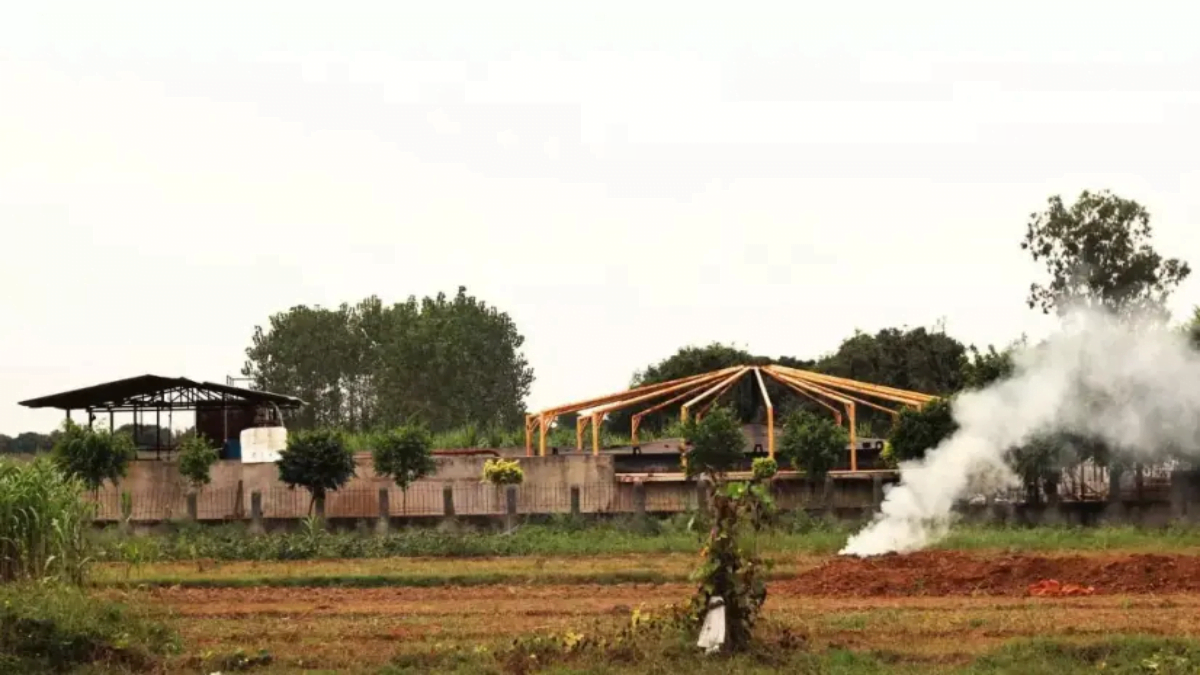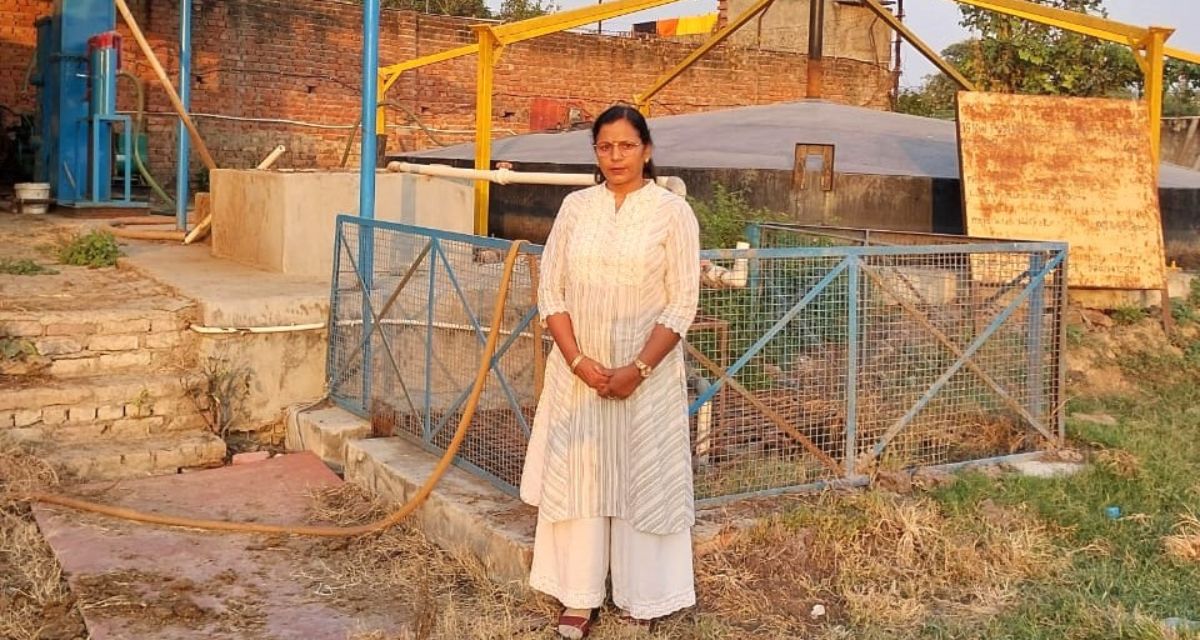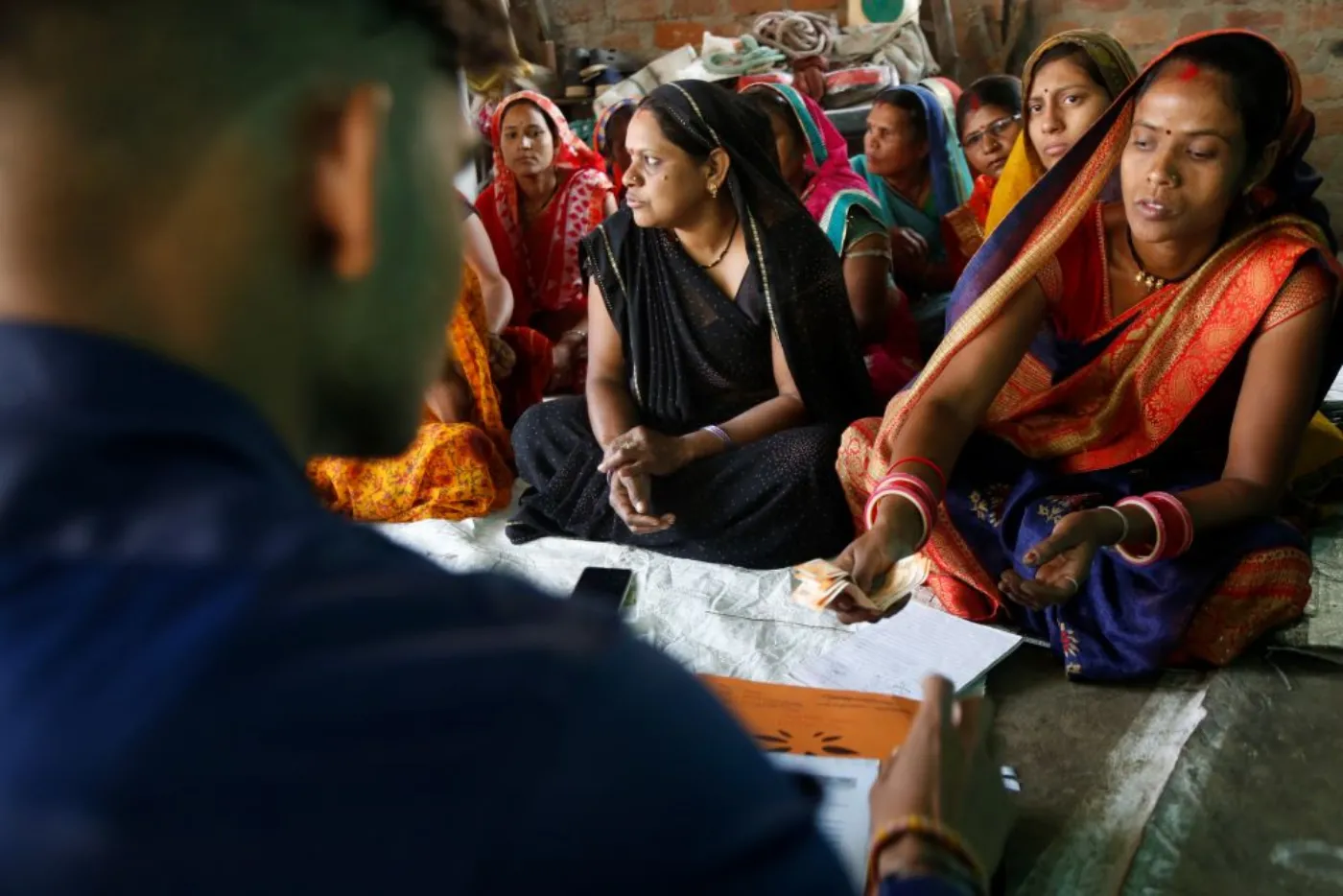Medium and large-sized dairy and poultry units are building biogas plants, despite the high installation costs, delayed subsidies and daily maintenance needs
By Sonali Singh
Meerut, Uttar Pradesh: A dairy farmer from Samaypur village in Meerut district of Uttar Pradesh, Archana Tomer (50) can vouch for the efficiency of biogas plants in generating renewable energy. In 2018, Tomer installed a biogas plant with a capacity of 140 cubic meters by using her personal funds at her dairy farm. It not only catered to her electricity needs, but also helped her get rid of the large quantities of cow dung that the farm produced.
Every day, she feeds cow dung diluted in water into the biodigester, a closed tank. With the help of microbes and through a chain of anaerobic digestion reactions, the apparatus converts the waste into biogas, which primarily comprises methane. Tomer generates electricity from it by using a generator.
This daily practice has helped Tomer reduce her dependency on grid electricity, primarily produced by polluting coal-fired thermal power plants. She installed the biogas plant around the same time when she launched her dairy farm. ‘I came to know about biogas technology by word of mouth. My plant has the potential to generate up to 16 kilowatt [kW] of power. It also produces biogas slurry, a byproduct that I use in my fields as manure,’ Tomer told 101Reporters.
Tomer is able to save Rs 10,000 to 12,000 a month in terms of the money spent on meeting the power requirements of her farm. The power generated is solely for the dairy farm, she does not use it in her house. However, she still needs some power from the grid for her business.
Tomer availed of the subsidy scheme of the Ministry of New and Renewable Energy (MNRE) for the plant, which was built through the Uttar Pradesh New and Renewable Energy Development Agency (UPNEDA) under the Biogas Power Generation (Off-Grid) and Thermal Energy Application Programme (BPGTP). While Tomer spent Rs 21.95 lakh on the plant, she became eligible for a subsidy of Rs 6.40 lakh.
Tomer is able to save Rs 10,000 to 12,000 a month in terms of the money spent on meeting the power requirements of her farm.
Around 35 km away, in the village of Kurali in the same district, Saurabh Kansal (42) owns a poultry farm. The biodigester he owns is visible as soon as one enters the village. During a visit to the farm, Kansal told 101Reporters that his poultry farm produced 20 tonnes of bird droppings and other wastes every day. He uses 10 tonnes, mostly bird droppings, to produce biogas, and sells off the remaining 10 tonnes to another bio-CNG plant as a feedstock at a nominal rate.
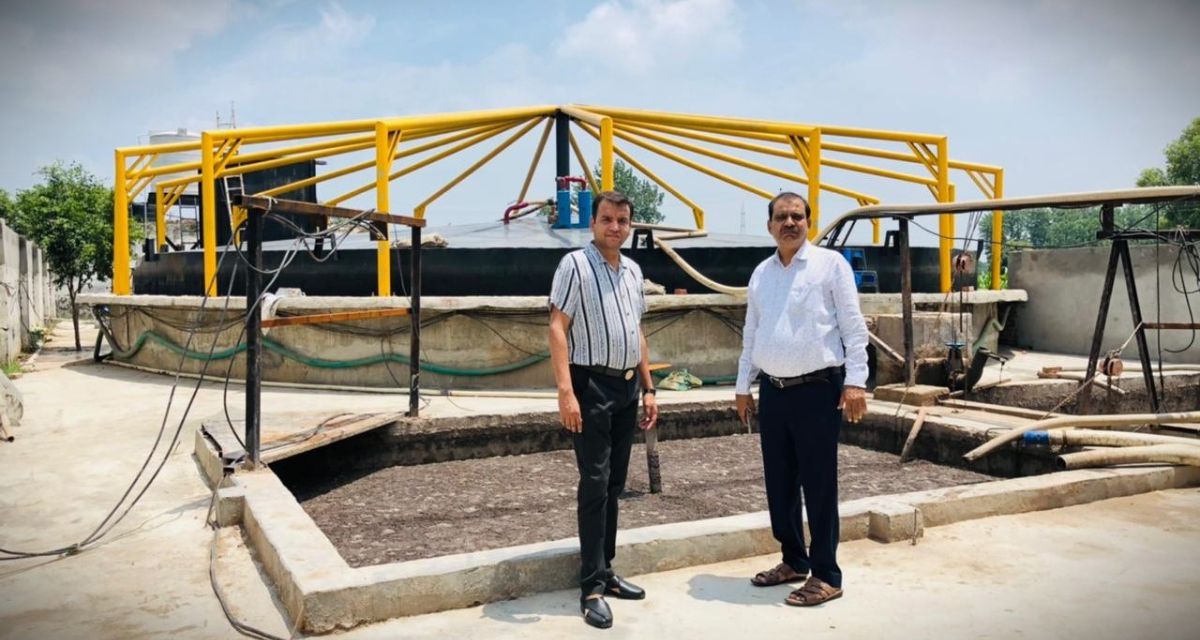
‘If you dump bird droppings into open fields, a pungent smell will cover the whole area and affect the lives of nearby villagers. So, I opted for biogas technology in 2020, after getting a bank loan. I spent a total of Rs 1.25 crore on the plant and became eligible for a subsidy of Rs 28.20 lakh,’ Kansal said.
The power requirement of his farm is 300 kW, of which the biogas plant produces 175 kW. ‘Biogas has reduced both the dependence on grid electricity and my electricity bills,’ Kansal said. The villagers gets the slurry for free from his plant to use as a biofertiliser for their crops. Before the launch of his biogas plant also, Kansal used to give bird droppings free of cost to the farmers, thus relieving himself of waste management.
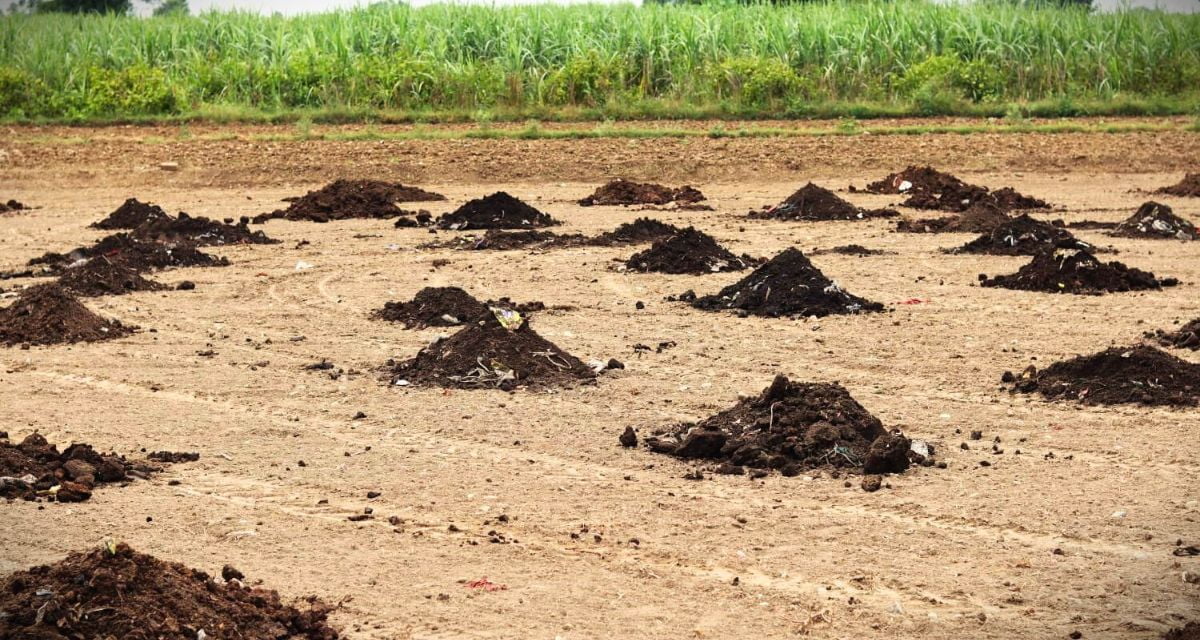
Scheme of things
Like Tomer and Kansal, hundreds of farmers in Uttar Pradesh use biogas to convert organic waste, mainly from dairy, livestock and kitchen, into energy. While some produce electricity from biogas, others use it as a cooking fuel. However, the Meerut district UPNEDA official did not provide data on the exact number of farmers who have adopted the technology. There was no response to the email and phone calls to the main office either.
According to the latest written statement of the MNRE in the Rajya Sabha, under the Biogas Programme, the ministry gives a Central grant ranging from Rs 9,800 to Rs 52,800 per biogas plant on the basis of the plant’s size (one to 25 cubic meter)
According to the latest written statement of the MNRE in the Rajya Sabha, under the Biogas Programme, the ministry gives a Central grant ranging from Rs 9,800 to Rs 52,800 per biogas plant on the basis of the plant’s size (one to 25 cubic meter). It added that a total of 1,056 such plants have been installed in the state under the programme between 2018-19 and 2022-23.
The ministry provides a Central financial assistance of Rs 35,000 to Rs 45,000 per kW of power generation capacity of the biogas plant installed. However, Uttar Pradesh does not have any dedicated scheme for biogas generation. Only schemes from the MNRE offer subsidies.
As per the Biogas Programme, Uttar Pradesh was given the target to construct 250 biogas plants during 2022-23. The state has a set target of building 1,000 small biogas plants (one to 25 cubic metre category) for 2023-24.
The use of biogas has several environmental benefits. According to the World Biogas Association, the use of biogas from different sources can help the world reduce its greenhouse gas emissions by up to 18 to 20%.
Lucknow-based Anand Tripathi, the director of Anand Engineers, an EPC (engineering, procurement and construction) player that has installed several biogas plants, told 101Reporters that biogas has proved to be an alternative to the polluting grid electricity and liquefied petroleum gas, besides being a good substitute for diesel.
‘However, it is also true that due to the high cost of biogas plants and lack of adequate waste availability with small farmers, this technology has been confined to medium and large farmers and entrepreneurs. Now, even the government utilities are installing it,’ Tripathi said.
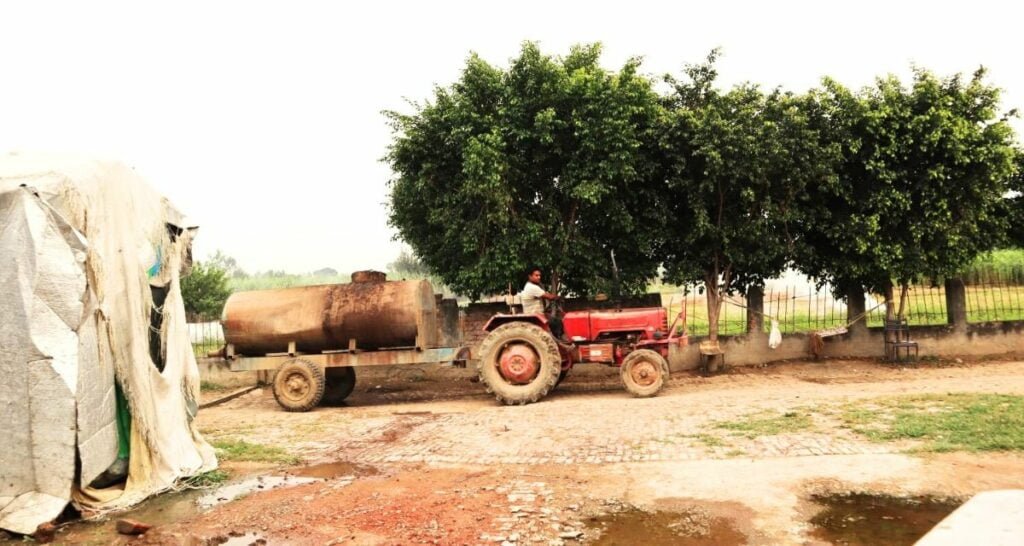
Multiple challenges in using biogas
Despite its utility, several challenges have kept the biogas pace much slower than the pace of solar and wind energy in India. According to experts and end users, the high cost in installing biogas plants, delayed subsidies, daily maintenance needs and lack of provision to dispose of slurry are the main challenges in the rural areas where biogas plants exist.
‘Biogas has come as a boon in tackling the issue of rural wastes. However, some issues are proving as hurdles in its wider adoption. These include lack of year-round supply of raw materials, lack of a centralised waste collection system and higher upfront cost of biogas plants. As biogas does not come under the priority sector lending, several banks are reluctant to fund commercial biogas plants,’ Rohit Pathania, a researcher and Lead (Centre for Clean Mobility) at OMI Foundation, a clean energy think tank, told 101Reporters.
Both Tomer and Kansal claimed that even after three to five years of their installations, they were yet to receive the subsidy amounts. Despite repeated efforts, the UPNEDA did not respond to the queries on the issue. An official from UPNEDA, requesting anonymity, however said, ‘There are special incentives for biogas consumers for different capacities of plants. There are also additional incentives for SC/ST consumers. They receive their subsidies in their bank accounts through direct benefit transfer.’
Tomer said even the nearby farmers were not interested in using the biofertiliser the plants generated, due to their lack of awareness and mistrust in the organic byproduct.
Kansal said the technology was unlikely to become popular among smaller farmers due to a lack of regular supply of feedstocks. Tomer said even the nearby farmers were not interested in using the biofertiliser the plants generated, due to their lack of awareness and mistrust in the organic byproduct. So, disposing of the slurry is an issue.
Highlighting the problems related to maintenance, Tomer further said, ‘The biogas plant is maintenance intensive. It would help only if you keep the plant running by regularly feeding cow dung or the other suitable feedstock. This aspect makes it tough for small farmers with fewer facilities. Being a specialised technology, there is a lack of availability of local technicians for repair work also,’ she detailed.
Sonali Singh is an Uttar Pradesh-based freelance journalist and a member of 101Reporters, a pan-India network of grassroots reporters.
About the author(s)
101Reporters is a pan-India network of grassroots reporters that brings out unheard stories from the hinterland.
